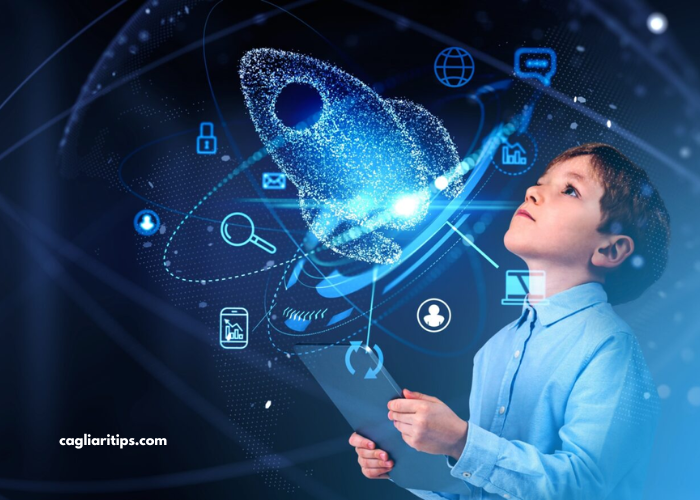Top Tech Trends to Watch in 2025
The technology landscape is evolving at an unprecedented pace, with new advancements shaping the way we live, work, and connect. As we step into 2025, several tech trends are poised to redefine industries, disrupt markets, and enhance our daily experiences. From artificial intelligence to quantum computing, the year ahead promises significant innovation and transformation.
In this coprehensive guide, we explore the top tech trends to watch in 2025, helping professionals, businesses, and tech enthusiasts stay ahead of the curve.
Artificial Intelligence Becomes More Human
AI-Powered Personal Assistants
Artificial Intelligence (AI) has been a dominant force for years, but in 2025, expect it to become more human-like than ever. AI-powered personal assistants are evolving beyond simple voice commands. With advancements in natural language processing (NLP) and emotional intelligence, AI can understand context, tone, and even human emotions.
These assistants will be capable of managing schedules, handling complex tasks, and providing personalized recommendations, making them indispensable in both personal and professional settings.
Generative AI in Content Creation
2025 will see a surge in generative AI applications. Tools like ChatGPT, Midjourney, and DALL·E are being refined for real-world use. Businesses are increasingly using generative AI for marketing content, coding, design, and even legal documentation.
Expect generative AI to become more creative and context-aware, streamlining operations across industries.
Quantum Computing Reaches a New Milestone
From Labs to Real-World Use Cases
Quantum computing has long been the domain of research labs and theory, but 2025 is set to witness the transition of quantum technology into practical applications. With companies like IBM, Google, and D-Wave making significant strides, quantum computing will begin to address complex problems in areas such as:
-
Drug discovery and genomics
-
Climate modeling
-
Cryptography and cybersecurity
-
Financial modeling
Quantum Supremacy and Its Impact
We are approaching a stage where quantum computers may outperform classical computers on specific tasks—a phenomenon known as quantum supremacy. While still in its infancy, the ripple effects on data encryption, artificial intelligence, and logistics could be profound and long-lasting.
5G and the Rise of 6G Research
Accelerating Connectivity
The global rollout of 5G is nearing completion in many countries, offering ultra-fast speeds and low latency. In 2025, expect 5G to power smart cities, autonomous vehicles, and remote surgeries. It will enable real-time data processing and communication at scales never seen before.
Early Development of 6G
Meanwhile, 6G is already under development, with expectations of delivering speeds up to 100 times faster than 5G. Research into terahertz waves, AI-driven networks, and space-based internet infrastructure is gaining momentum. While mainstream deployment may still be years away, 2025 will be a pivotal year for setting standards and testing prototypes.
Sustainable Tech and Green Innovation
Energy-Efficient Hardware and Infrastructure
As climate concerns grow, 2025 will mark a shift toward sustainable and energy-efficient technologies. Data centers, notorious for consuming massive amounts of electricity, are being reimagined with liquid cooling systems, renewable energy sources, and AI-optimized power usage.
Circular Economy and E-Waste Reduction
Tech companies are embracing circular economy models—designing products that can be reused, recycled, or refurbished. From modular smartphones to biodegradable circuit boards, expect innovations aimed at reducing electronic waste and carbon footprints.
The Expansion of the Metaverse
Beyond Virtual Reality
While the buzz around the Metaverse began years ago, 2025 will see its deeper integration into everyday life. Companies are now focusing on useful, immersive experiences rather than just virtual hangouts. Expect applications in:
-
Virtual workplaces
-
Immersive education
-
Interactive retail experiences
-
Virtual tourism and travel planning
Spatial Computing and Mixed Reality
The fusion of augmented reality (AR), virtual reality (VR), and mixed reality (MR)—collectively known as spatial computing—is becoming more accessible. Devices like Apple Vision Pro and Meta Quest 3 will support more realistic interactions in both physical and virtual environments.Cybersecurity in the Age of AI and IoT
Smarter Threat Detection
With AI and IoT devices proliferating, cybersecurity threats are becoming more complex. In 2025, security systems powered by AI will be able to predict, identify, and respond to threats in real time.
Behavioral analysis, zero-trust architectures, and biometric authentication will be vital in ensuring system integrity.
Rise of Quantum-Safe Encryption
As quantum computing advances, traditional encryption methods are at risk. Organizations are now turning to quantum-safe encryption techniques to future-proof sensitive data and communication channels.
Personalized and Predictive Healthcare
AI in Diagnostics and Treatment
2025 is the year where healthcare and technology converge like never before. AI-driven diagnostics are being implemented in hospitals globally to analyze X-rays, MRIs, and genetic data faster and more accurately than human doctors.
Wearables will continuously monitor vital signs and provide real-time alerts, potentially saving lives through early detection of health issues.
Telemedicine and Remote Care Evolution
Post-pandemic, telemedicine is no longer a trend—it’s the norm. Enhanced video conferencing tools, secure patient portals, and remote diagnostic kits are allowing doctors to treat patients from any location, increasing accessibility and reducing healthcare costs.
Edge Computing Becomes Mainstream
Real-Time Processing at the Edge
Edge computing is shifting data processing closer to the source—whether it’s a smart factory, autonomous car, or wearable device. This reduces latency, improves speed, and enhances data privacy.
In 2025, edge computing will be critical in IoT applications, from predictive maintenance in manufacturing to real-time analytics in retail and logistics.
Integration with AI and 5G
When combined with AI and 5G, edge computing creates a powerful ecosystem that supports instant decision-making, localized machine learning models, and decentralized architecture, reducing the need for constant cloud communication.
Robotics and Automation Go Autonomous
Collaborative Robots (Cobots)
2025 will see the proliferation of collaborative robots or “cobots”—machines that work alongside humans in warehouses, manufacturing plants, and even hospitals. These robots are designed to be safe, adaptive, and smart.
Fully Autonomous Systems
From self-driving cars to drone deliveries, automation is pushing boundaries. Improvements in sensor technology, navigation systems, and machine learning are making it possible for robots to operate without human intervention in complex environments.
Decentralized Finance (DeFi) and Web3 Evolution
Blockchain Beyond Cryptocurrency
While Bitcoin and Ethereum continue to attract attention, blockchain technology is being used for far more than crypto. In 2025, expect applications in:
-
Supply chain transparency
-
Secure digital identity
-
Smart contracts in legal systems
-
Decentralized voting systems
Web3: The Decentralized Internet
Web3 envisions a more secure, user-controlled web experience, where individuals own their data and content. With decentralized storage solutions, distributed applications (dApps), and tokenized assets, the foundation for Web3 will strengthen throughout 2025.
Human Augmentation and Brain-Computer Interfaces
Enhancing Human Capabilities
Technologies aimed at enhancing physical and cognitive abilities are progressing rapidly. From exoskeletons aiding mobility to neural implants improving memory and attention, 2025 will witness early-stage applications of human augmentation.
Neural Interfaces from Lab to Reality
Companies like Neuralink are developing brain-computer interfaces (BCIs) that allow humans to control devices with their minds. While still experimental, these interfaces could revolutionize how we interact with technology in the future.
Ethical Tech and Digital Wellbeing
Tech with Purpose
As the influence of technology grows, so does the need for ethical design, inclusivity, and responsible innovation. In 2025, expect stricter regulations around AI ethics, data transparency, and algorithmic accountability.
Focus on Mental Health and Screen Time
Digital wellbeing tools—apps that help manage screen time, reduce online toxicity, and promote mindfulness—will become more refined and prevalent, particularly as burnout and digital fatigue rise across the globe.
Final Thoughts
The year 2025 is poised to be a landmark for technological innovation. From quantum computing breakthroughs to AI integration in everyday life, the digital world is expanding in depth, speed, and scope. Organizations and individuals that stay informed and adaptable will be best positioned to leverage these changes.
By embracing these top tech trends in 2025, we can unlock new opportunities, solve critical global challenges, and shape a smarter, more connected future.
Frequently Asked Questions (FAQs)
What is the most important tech trend of 2025?
While several trends are shaping the future, Artificial Intelligence and Quantum Computing are likely to have the most transformative impact across industries.
How will 5G and 6G affect daily life?
These technologies will enable faster internet, real-time communication, and advanced automation, impacting everything from mobile streaming to autonomous vehicles.
Is Web3 ready for mainstream adoption?
Web3 is still in its developmental phase, but in 2025, key infrastructure and use cases will solidify its potential for broader adoption.



